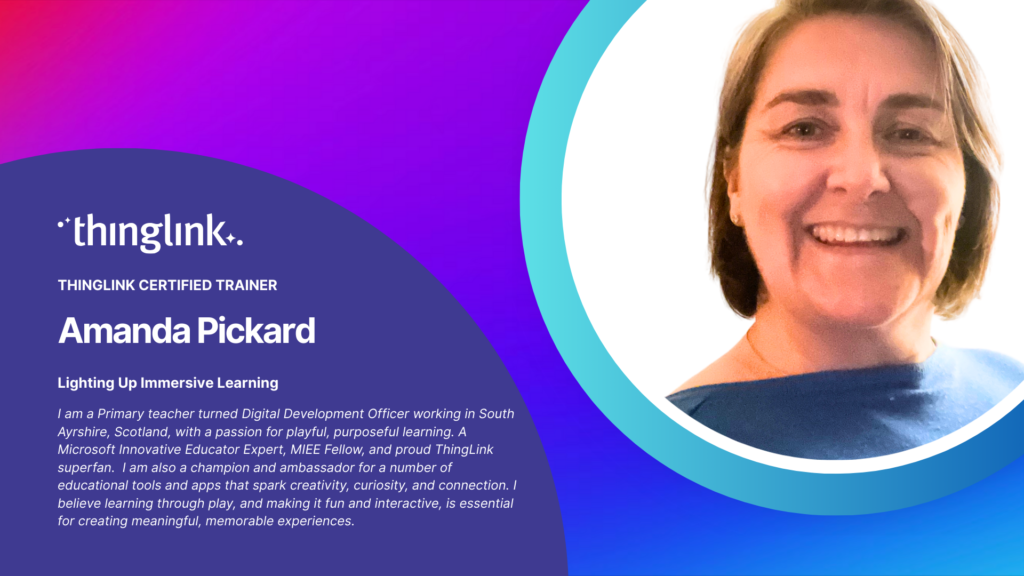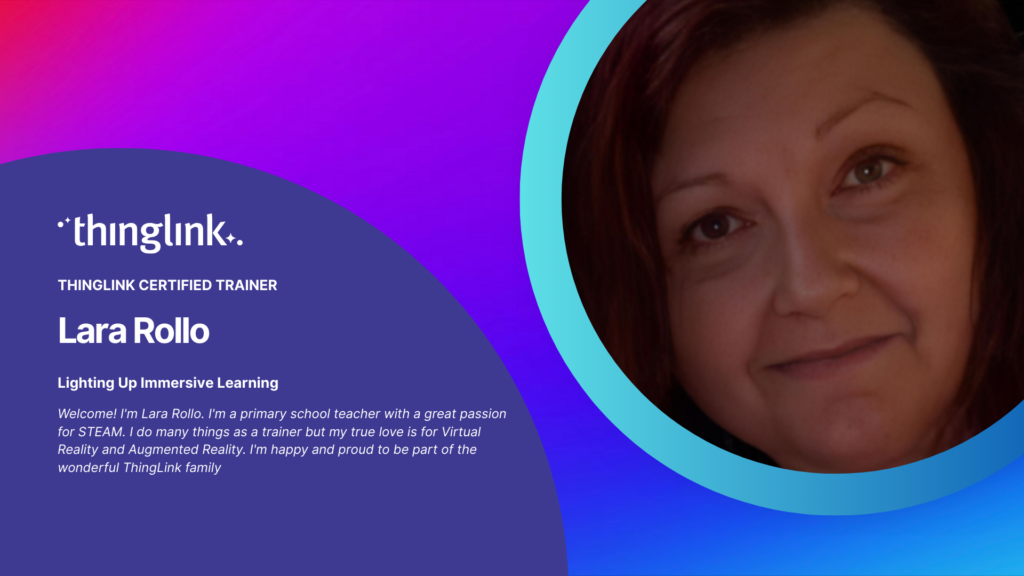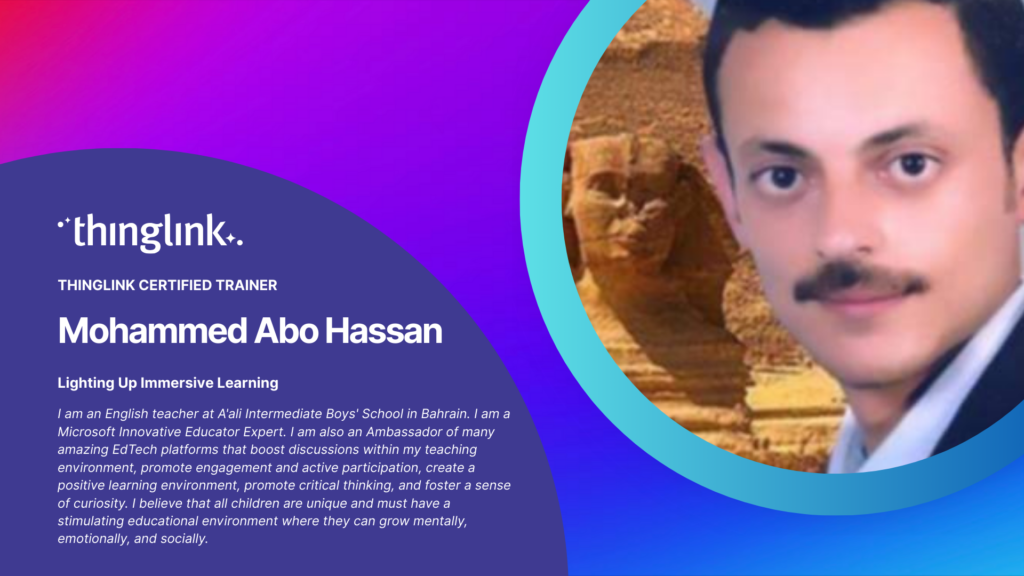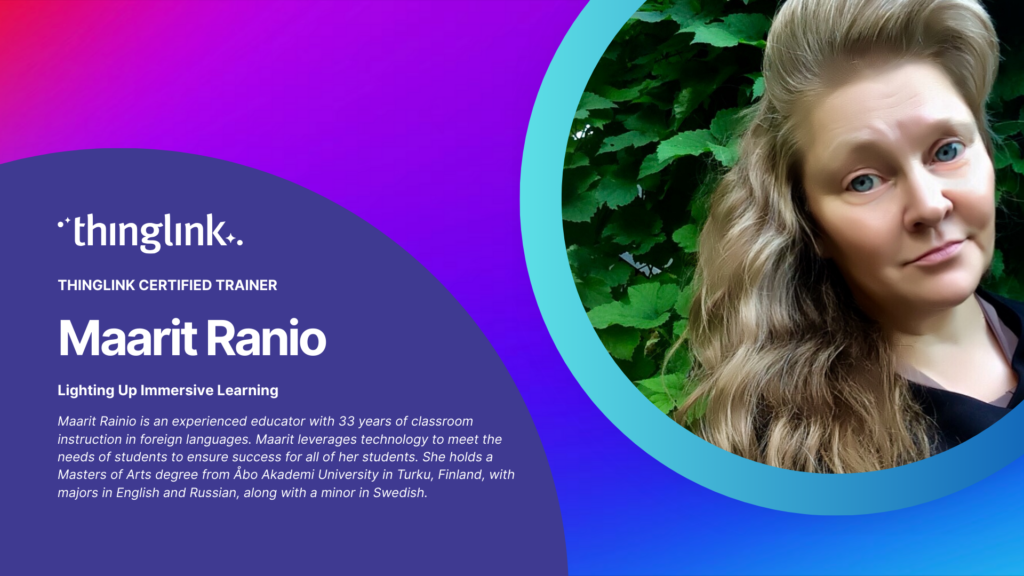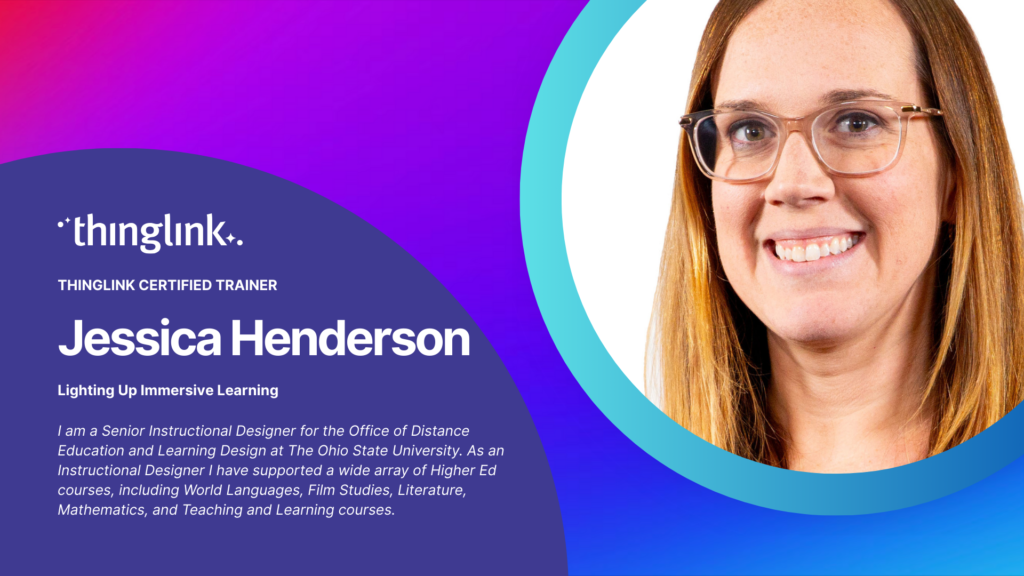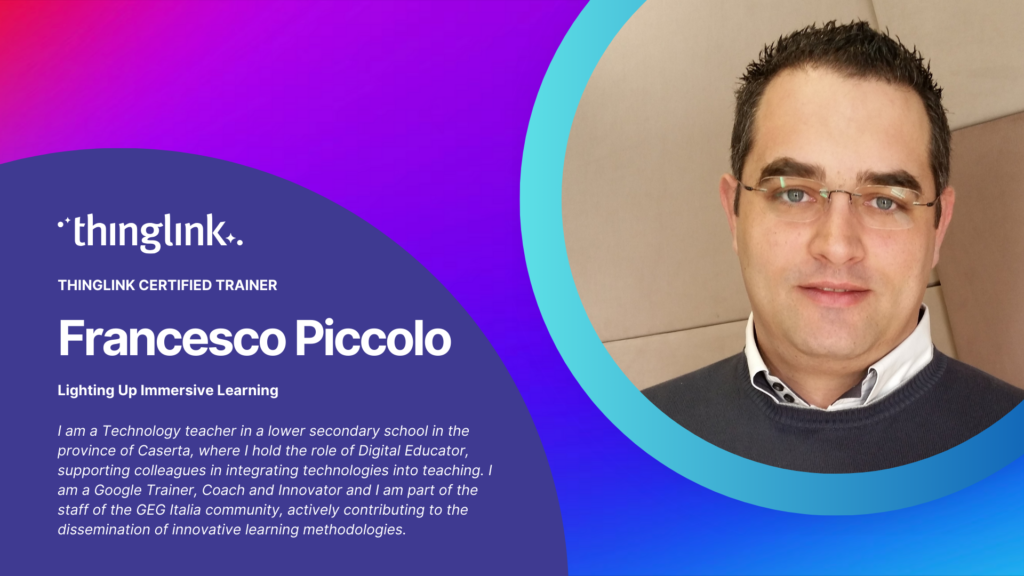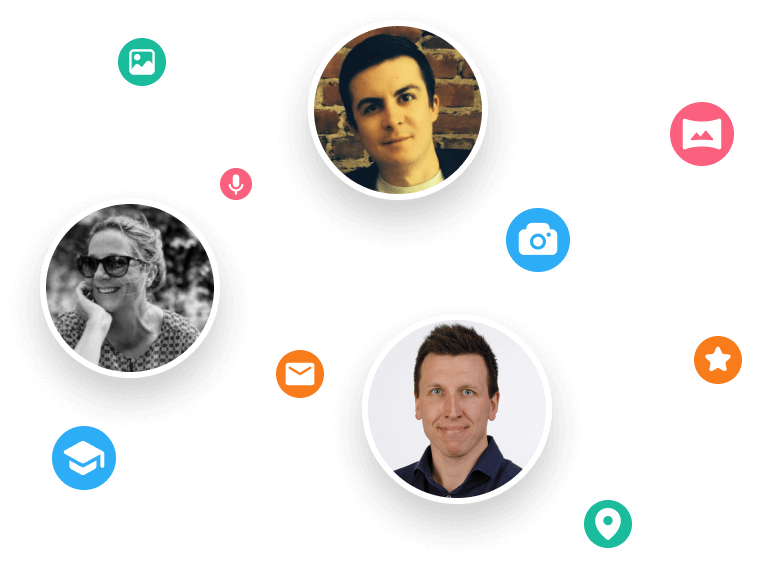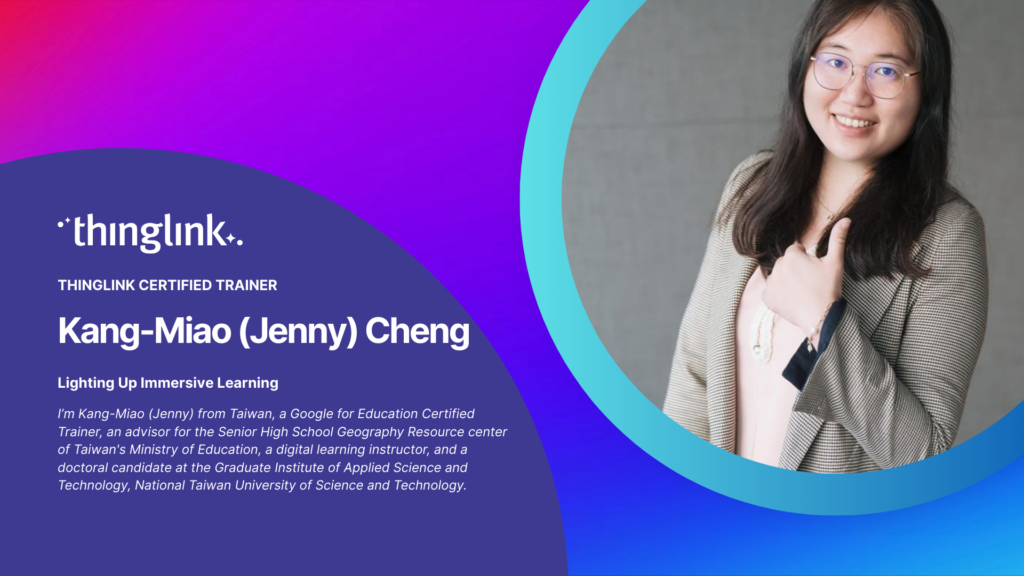
ThingLink Spotlight! Lighting Up Immersive Learning with Kang-Miao Cheng
ThingLink Luminaries is a series of guest blog posts highlighting certified trainers who are creating interactive and immersive experiences to make learning more engaging, accessible, and meaningful. Our educators and learning designers bring a thoughtful approach to immersive learning, and their work reflects a deep commitment to creativity, pedagogy, and innovation.
In each profile post, we’ll explore their background, teaching philosophy, and favorite ThingLink projects—offering insight into how they’re making a lasting impact in their classrooms, organizations and communities! Enjoy!
Would you like to become a ThingLink Certified Trainer?
If you’d like to learn more about the benefits of being part of our global ThingLink Certified Trainer community, check our page!
Introducing Kang-Miao Cheng
I’m Kang-Miao (Jenny) from Taiwan, a Google for Education Certified Trainer, an advisor for the Senior High School Geography Resource center of Taiwan’s Ministry of Education, a digital learning instructor, and a doctoral candidate at the Graduate Institute of Applied Science and Technology, National Taiwan University of Science and Technology. I am committed to integrating technologies such as VR/AR and Generative AI into education.
I actively share experiences in innovative pedagogy and continue to explore how to design immersive learning environments. My mission is to lower the threshold for teachers in producing immersive digital learning materials and to help students “experience the world firsthand,” so that learning is no longer limited to textbooks and classrooms.
Kang-Miao’s ThingLink Project
This project centers on the traditional architecture of Taiwan’s Tao (Yami) indigenous group—the Lanyu underground house. It is designed as an interactive teaching game integrating VR environments, mission-based tasks, and cultural learning. Students enter the virtual underground house, engage in dialogues with characters, and solve spatial and cultural challenges. Through gameplay, they gain knowledge of traditional architecture and indigenous wisdom, while strengthening cultural understanding and spatial awareness.
What inspired you to create this project?
I’ve long hoped to help students truly understand the cultural context of Taiwan’s indigenous peoples. However, field visits are limited due to time and distance. I began transforming the Lanyu underground house into a 360-degree immersive scene and created a mission-based learning experience with embedded dialogue and problem-solving. With ThingLink, I was able to integrate history, geography, architecture, and cultural knowledge into a single interactive space, allowing students to explore, learn, and reflect like adventurers
How was this project delivered?
This project has been integrated into the high school geography curriculum under the themes of “environmental carrying capacity and cultural heritage,” as well as the history unit on “the history and cultural significance of architecture.” In class, students work in groups to enter the VR environment, explore and document information from the mission, and complete puzzle-based learning activities integrated with platforms like Quizizz. Through ThingLink, students not only experience architectural culture but also explore indigenous languages and traditional music via embedded audio files, guided narrations, and local cultural stories—enhancing their multisensory learning experience.
What was the impact?
Students demonstrated high levels of engagement and curiosity; some even proactively investigated Tao vocabulary and further explored the history of indigenous peoples. This shows that such learning experiences effectively foster cultural sensitivity and critical thinking.
What other projects do you dream of creating?
My current project integrates environmental education with immersive VR game design. It focuses on tropical rainforest development and indigenous sustainability issues. Students navigate between forests and tribal communities, making decisions and reflecting on consequences. My dream is to build a full “Immersive Geographic-Cultural Map” where students can experience every land’s story and voice from a first-person perspective.
What do you love about using ThingLink?
What I love most about ThingLink is how it naturally integrates 360° imagery with multimedia and interactive elements. It allows educators to design logically structured and immersive learning content in a simple and intuitive way. Every scene becomes a story, and every mission turns into a journey of discovery.
Fun Fact and Connect with Kang-Miao
I enjoy using AI multimodal tools to develop various types of teaching materials—for example, collecting old local photographs or street views and designing “time-travel games” where students solve puzzles by comparing past and present imagery!
🔗 Connect with Kang-miao (Jenny) Cheng via LinkedIn
